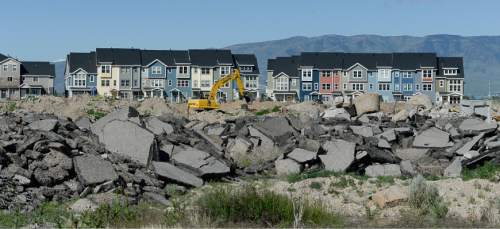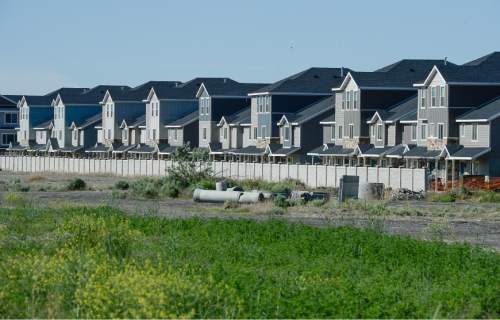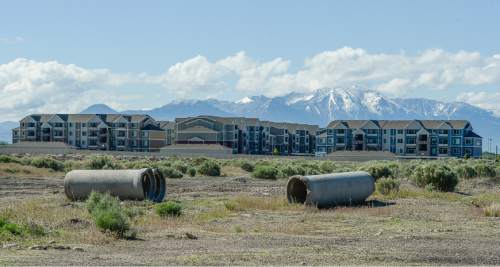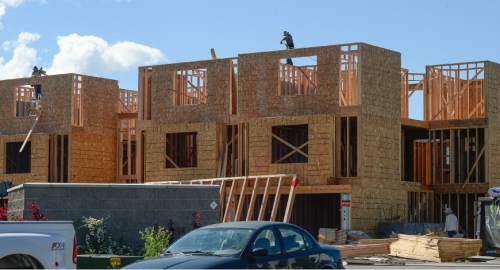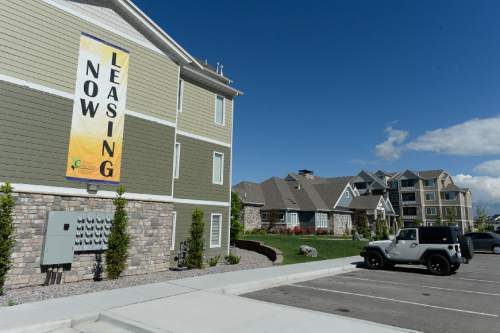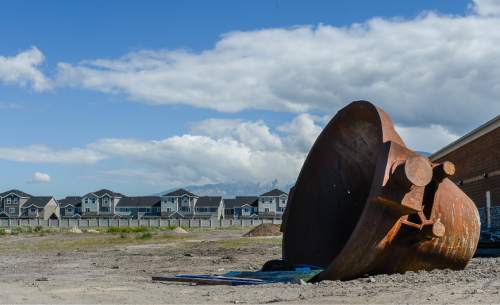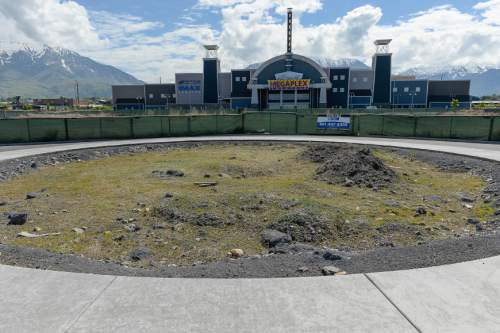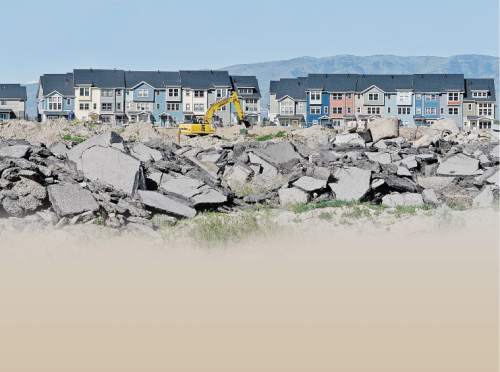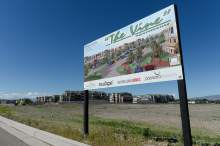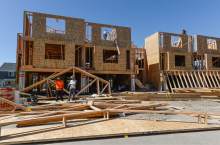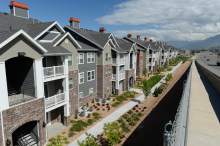This is an archived article that was published on sltrib.com in 2016, and information in the article may be outdated. It is provided only for personal research purposes and may not be reprinted.
New U.S. Census data show that the Utah County town of Vineyard quintupled its population last year — from 617 to 3,195 residents — thanks to new development sprouting up on the site of the old Geneva steel plant.
Vineyard added more people — 2,578 — than such usually expected-to-grow-fast cities as Herriman, Lehi and Eagle Mountain. It even added more than twice as many new residents as Salt Lake City.
New 2015 population estimates for cities nationwide released Thursday also show that South Jordan was the No. 5 fastest-growing city in the country by percentage, for those with populations greater than 50,000. (A year earlier, South Jordan's rising population knocked Taylorsville off Utah's top 10 biggest cities to claim the 10th spot for itself.)
Also, St. George topped the 80,000 population mark, and Logan exceeded 50,000 for the first time.
The data show 198 of Utah's 244 cities and towns gained residents, 33 lost population and 13 remained unchanged. (A chart with the population and change for each is online at sltrib.com).
—
Vineyard • But the biggest news may be the transformation occurring at the old steel plant site on the east side of Utah Lake.
Thousands are flocking to Vineyard because "available land is hard to come by in the middle of Utah County," said Jacob McHargue, the city's financial director.
"It's convenient," he said about the @Geneva development. "One of the things that makes Vineyard attractive is that it has four freeway exits, and will have a future FrontRunner stop in the middle of town."
Growth is so fast that McHargue estimates that Vineyard's population this year has already hit 5,000 or more. "We've issued 1,000 building permits this year," which he said should add about 3,500 more people.
The @Geneva development is expected to add as many as 27,000 people in less than a decade in a 1,700-acre complex of houses, apartments, town homes, stores, offices, factories, school buildings and a new town center.
It is bringing new life and value to one of the largest U.S. brownfields west of the Mississippi River. Redevelopment bonds issued by the town helped to finance the cleanup, developer incentives and new water, sewer and road amenities.
"It's going to be amazing," McHargue said. The new development has some lakefront properties, Utah Valley University has 225 acres there and new movie theaters just opened. "And it will be a very walkable community."
He said the utilities and roads are keeping up with the rapid growth, and two charter schools are being built there.
—
South Jordan • One Utah city had even greater growth last year, and was top in the state. South Jordan added 3,797 people, up 6 percent, for a new total population of 66,648.
Among cities with populations of 50,000 or more, only four nationwide had faster rates of growth: Georgetown, Texas, 7.8 percent; New Braunfels, Texas, 6.6 percent; Ankenny, Iowa, 6.5 percent; and Frisco, Texas, 6.3 percent.
As in Vineyard, South Jordan City Manager Gary Whatcott said so much growth occurs there "because the southwest valley has available land."
Also, two-thirds of his city's growth is coming in the new Daybreak community.
"It offers a variety of amenities, and seems to appeal more to millennial-age people, where you have smaller lots and more recreational opportunities and trails," he said.
South Jordan is about midway between Salt Lake City and the new high-tech Silicon Slopes area of northern Utah County — so Whatcott said it is convenient for commuting to both. It is on Interstate 15, and has both FrontRunner and TRAX stations.
"It's an attractive place to live. We've worked hard at streetscapes and aesthetics that give it a nice feel," Whatcott said. "I think people can recognize the difference when they drive down the street."
He also figured, "We have a lot of growth left to go," and that "as long as the economy remains good, we should have steady growth for years."
—
Orem • The Utah County city of Orem added the second-most people of any Utah city last year, 2,581, for a new total of 94,457. Steven Downs, assistant city manager, said that comes from a combination of continued growth at Utah Valley University, and recent construction of many apartments citywide.
"It met a lot of pent-up demand," he said. He adds that 70 percent of UVU graduates are remaining and working in Utah County, which helped the city's growth. Much of the increase comes simply from families there having more children.
Pam Perlich, director of demographic research at the University of Utah's Kem C. Gardner Policy Institute, said many of the new housing developments in the state and rising birthrates are signs of economic recovery after the Great Recession.
"We really bottomed out in 2010," she said, as "people had to double up in houses. People couldn't form independent households. Young people were still living with their parents," and many couples delayed having children.
"All that pent-up demand for household formation is beginning to express itself, and you are seeing the building of new homes," she said. "Also, people are beginning to have children again. It's not just a Utah thing; it's a national thing."
Perlich adds that growth in Utah County in recent years surpasses that in Salt Lake County, which is historically unusual. Much of the fastest growth in the state is in northern Utah County and southern Salt Lake County.
Some of the booming population in that area breaks down this way: Herriman, up 2,203 to 30,835; Lehi, up 2,171 to 58,486; Eagle Mountain, up 1,191 to 27,332; Saratoga Springs, up 1,045 to 25,407; and Bluffdale, up 1,028 to 10,931. —
Utah's largest cities, 2015
1. Salt Lake City 192,672
2. West Valley City 136,208
3. Provo 115,264
4. West Jordan 111,946
5. Orem 94,457
6. Sandy 93,613
7. Ogden 85,444
8. St. George 80,202
9. Layton 74,143
10. South Jordan 66,648
Source: U.S. Census Bureau estimates.


